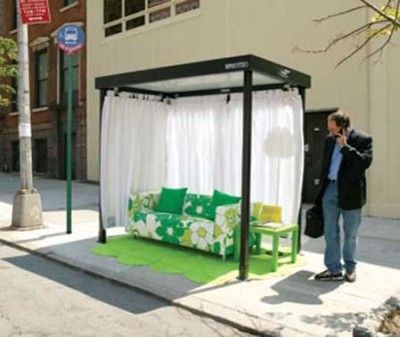You know, you should write a song about this. You could call it "I got punched in the nose for sticking my face in other people's business".
-Glen Gulia
When the disc is at rest, the defense is able to hold the advantage over the offense. When the disc is in motion, the defense cannot hold the advantage over the offense.
In my previous post, I revealed what the first principle of defense suggested for marking the disc. In this post, I will talk about what the first principle of defense suggests for field defenders marking receivers.
Field defense is simple. You just have to stick your face in other people's business. Hopefully, you won't get punched in the nose.
Another casualty of great field defending.
The defender's job is to directly contest whatever the receiver is trying to do. If the receiver is looking to make an in-cut to the forehand side, the defender needs to position himself in such a way as to make that particular cut impossible or at least highly unattractive to the receiver. This holds for deep cuts and handler cuts just the same.
The assumption here is that the defender has a reasonable idea of what the receiver is trying to do. Field defense is a great deal more about the defender's mind than it is about his body. The body must be able to execute the plan created by the defender's mind, of course. But having that plan first is essential. Obviously, if the receiver is attempting to stand on the shoulders of the thrower, then the defender need not contest that and should plan on doing something else (poaching the main passing lanes, for example).
Why do we defend receivers?
We defend receivers to stop the offense from moving the disc easily. Moving the disc easily leads to the offense scoring and this is, by definition, a failure on the part of the defense as a whole. Please note that our goal in defending receivers cannot be to stop the offense from moving the disc completely. This cannot be our goal because it goes against the nature of the game of ultimate. The rules under which we play define a game that is offensively dominated. We should accept this when we sign up to defend.
I think that it is important to have realistic goals in any facet of ultimate because failure tends to breed failure. We have all felt the wind go out of our sails defensively as a force gets broken repeatedly and the offense gets an easy score. The second (and third and fourth, etc) break is easier than the first because we feel that defense has failed in its goal of "not getting broken". As I've previously written, that goal sucks (for many reasons, but in this case it sucks because it is fundamentally outside the defense's control). We must respect our own motivation by giving ourselves goals whose achievement we can control.
Every field defender knows after every cut whether or not he allowed the offense to move the disc easily. If he didn't allow an easy throw to his receiver, then that defender has done his job (I am ignoring team defensive concepts about responsibility at this time). This knowledge along with an understanding of his individual defensive goal provides a framework which allows the defender to constantly evaluate his defense.
How do we defend receivers?
We get it. We know that our receiver wants to make an in-cut to the forehand side. We know that it is our goal to make this difficult for the receiver. But, what tactics do we use to accomplish this goal? There are two main tactics that we use.
1. We position ourselves in such a way as to physically direct the receiver away from the in-cut to the force side. Put more simply, we get into our defensive crouch directly between the receiver and where he wants to go. And, we orient ourselves in such a way as to have a distinct advantage in an all out race between defender and receiver to the receiver's target area.
But, you say, it's a big field and there are literally hundreds of square feet where the receiver could go to achieve his goal (IE catching the disc). I agree. The receiver has a great advantage over the field defender in that he can improvise his tactics to achieve his goal. Thankfully, all of his improvisations must start somewhere. And that somewhere is where we set up in our defensive crouch.
Put into practice, this means that we set up in very close proximity to the receiver between him and his goal. We should be close enough to touch him without fully extending our arm. This close setup allows us to immediately cut down on his improvisation abilities as he cannot, without fouling us, make his initial move toward his target area.
It always astounds me how rarely defenders set up in this position. We all understand how devastating a receivers first step can be and how easy it is for him to get us going in one direction only to turn in another direction and leave us behind. And yet, we rarely position ourselves so as to stop him from starting his move the way he wants to.
As a receiver, I hate when a defender sets up close to me. It makes me uncomfortable. My discomfort cannot help but make me cut worse than I would if I were able to comfortably begin my cut. A close defender also makes me rethink me goal. If I was planning on an in-cut and a defender sets up close to me in a position between me and my target area, I will at least consider taking the easy way out and making a different cut.
This hesitancy of the receiver to commit to his initial tactic (his best or most comfortable cut) is a victory for the field defender. It is an important victory both because it can screw up an offense and because it takes little physical effort from the field defender to achieve.

The close-talker set up perfectly on Jerry, who was looking to make an in-cut toward the couch.
2) We constantly readjust our defensive setup as the disc moves to account for the receiver's changing target areas. Receivers are not robots. If you succeed in taking away their first step by setting up in great defensive position, they are not going to power down for the rest of the point. You still have to play defense.
He'll stop if you cut him off, but your receiver won't.
This means that your receiver will probably still attempt to make his cut even though you are in the way. He will fake other cuts to get you off-balance. He will pretend that the disc has already been thrown to make you turn your head. He will run directly at you to get you on your heels. And then, after all of these things, he will sprint like a madman to his target area.
You will, at all times and through all manner of fakes, remember your goal. Your goal is to make it difficult for your man to easily catch the disc. Your goal is NOT to make every cut difficult for the receiver. This knowledge will allow you to ignore the receiver's fakes. If he starts sprinting deep, you will certainly follow him and you will sprint to keep up. But, your goal will not be to beat him to the endzone. Your goal will still be make the in-cut to the force side difficult.
As you chase him, you will actively work to keep yourself between him and his simple potential target area (the forehand side roughly 15 yards from the disc). You do this because at any moment he will likely turn around and cut back to that area. Thankfully, because of your superior positioning and your mental discipline, you will be waiting for him to do this and be right in his way. If he creates space between the two of you, such that you are no longer directly in his way, your positioning will still give you an advantage because you will still be closer to his target area than he is.
Remember, you cannot make it impossible for him to in-cut to the forehand side, but you can make it exceedingly difficult.
At this point, I'm sure many of you are thinking, but what about when the thrower decides to throw it deep to the receiver I'm taking the in-cut away from? Am I just supposed to allow myself to get burned? The answer is twofold.
First, your teammate who is marking the disc is putting a flat active mark on the thrower. This marking style makes the deep throw much more difficult than a traditional forehand force because the thrower does not have a free throw that he can rip without fear. Instead, the thrower must pivot out very wide if he wants to throw deep. This wide pivot leads to shorter and generally lower quality hucks.
Secondly, even though you anticipate that the receiver you're marking is targeting the space 15 yards downfield of the thrower on the forehand side, you are still close to the receiver as he sprints toward the endzone. It would take an astoundingly good throw to allow the receiver to take advantage of the steps he has on you. And given the flat active mark on the thrower, such a throw is highly unlikely.
Lastly, you will have help from team defense. Not every field defender's receiver will be cutting at the same time. Not every field defender will have to follow his receiver all over the field. You are not playing alone. You will have help deep from your teammates. I will go into how exactly this help works in future posts.












